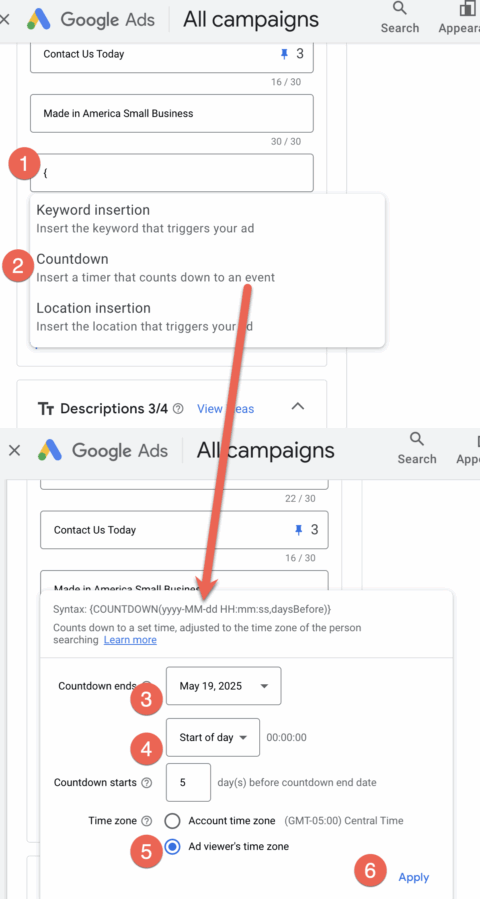Paid media offers one of the fastest ways to promote a business event and get the right people to take action.
Event campaigns are not just regular ads with a date added. They need a dedicated strategy, setup, budget, and audience targeting to succeed.
From webinars and product launches to open houses and local promotions, you’ll get better results by treating your event like a stand-alone campaign.
Here’s how to approach it with paid search and social ads that drive participation.
What Types Of Events Can Be Promoted?
Here are common examples of business events that can benefit from paid ad promotion:
- Conferences (virtual or in-person).
- Webinars.
- Product launches.
- Open houses.
- Grand openings.
- Sales or seasonal promotions.
- Trade show participation or speaking engagements.
- Local festivals or community events.
- Pet adoption events.
- Sports or sponsorship tie-ins.
- Class registrations or training signups.
For an “event,” we generally look for a special, notable activity outside of normal business, with a limited time for engagement.
Considerations Before Campaign Setup
Use A Stand-Alone Campaign
Each event should have its own dedicated campaign. This gives you more control over:
- Budget.
- Targeting.
- Messaging.
- Conversion tracking.
Don’t try to squeeze event ads into your evergreen campaigns. Keep it separate so you can measure impact clearly.
Budget Separately
A separate budget prevents your main campaigns from losing momentum. Even a small spend focused on urgency and high-intent audiences can produce a strong ROI.
Incorporate Into Your Ad Copy
Add event details directly into your ad copy, such as headlines or descriptions in responsive search ads (RSAs), and use the pinning feature to lock critical details into place.
For higher control, create an entirely new custom ad built specifically around the event message.
Use promotion assets in Google Ads for sales-driven events that include a discount or monetary offer.
Double-check each platform’s documentation to confirm which features are available and how they are currently labeled.
-
 Screenshot by author, June 2025
Screenshot by author, June 2025
4 Tips To Design High-Performing Event Campaigns
After creating a new campaign for your event and allocating its budget, there are several other factors to consider when promoting events.
Tip 1: Get Straight To The Point
Event ads need clear details upfront:
- Event name.
- Date and time.
- Location (or virtual link).
- A CTA like “Register”, “Sign Up”, or “Save Your Seat.”
Use direct headlines and don’t leave room for interpretation. Test countdown timers (Google) in your ad copy to build urgency.
Check out Microsoft Ads, which has a great explanation on how the countdown feature works.
- Example: “Only 3 Days Left to Register for the Free AI Workshop”
If you’re offering discounts or early-bird pricing, clearly state it in both the headline and description.
Below is the Google Ads example of setting this up in a headline and steps to implement.
-
 Screenshot by author, May 2025
Screenshot by author, May 2025
Tip 2: Be Strategic About Timing
The timeline for event promotion is mission-critical. Some events only require a few days of promotion, while others may need weeks or months of preparation.
Plan around three phases:
- Pre-event hype: Build interest and drive signups.
- During the event: Push for last-minute attendance or livestream engagement.
- Post-event: Retarget attendees for future events or promote replays.
Also, confirm your ad platform’s scheduling limits. Google ends ads at 11:59 p.m. of the advertiser’s time zone. Some let you choose a specific time (in 24-hour format).
Tip 3: Location Targeting
The location targeting will be largely determined by the event’s real, physical location, but there are a few things to consider.
Depending on the density of the customer base, location targeting will vary for each advertiser. Match the event’s scale to your location settings:
For example:
- Local: Use radius or city-level targeting around the physical location.
- Regional: Layer metro areas or ZIP codes with high interest.
- National or online: Prioritize geos with the highest engagement or ROI historically.
With national targeting, you may want to prioritize budget allocation to major metro areas. Another approach is to review your customer purchase data for trends in revenue or return on investment (ROI) by location.
Tip 4. Use Targeting Unique To The Event
Your existing keyword list or audience segments may not apply to an event. Build targeting around:
- Specific event names or branded keywords, such as “Tech Expo 2025.”
- Related topics or products featured at the event, such as boat models for the boat show.
- Competitor brands or category searches.
- Audience interests like “small business tools” or “data analytics training.”
- Use customer lists on your preferred platform to reach similar audiences.
Bonus Tip: How To Leverage Events (Local Or Otherwise) Even If You Are Not Participating In Them
You don’t need to be directly involved in the event to benefit from event-driven ad traffic. You can also capitalize on events related to your business to gain extra exposure.
For example, if a local wedding expo is happening in your area, a florist or event planner can run campaigns targeting attendees who are searching for event services during the show.
This strategy works for:
- Industry conferences.
- Seasonal community events.
- Awareness days or promotional months.
Set up a parallel campaign with relevant offers or content that aligns with the audience’s mindset during the event.
Final Thoughts
Event campaigns deserve more than a last-minute or a generic ad slot.
With a strategic approach, they can build brand awareness, generate leads, and leave a lasting impression.
By setting up a dedicated campaign, writing clear and timely messaging, and using specific targeting, you’re setting the stage for better results.
Even if you’re not hosting the event, there are still ways to show up and be seen.
Put your event in the spotlight. When you run it like a pro with paid media, the results speak for themselves.
More resources:
- How To Get Ad Creative AI-Ready In Search Ads
- How To Write Better Ad Copy When Google Ads Uses AI-Assisted Features
- PPC Trends 2025
Featured Image: PeopleImages.com – Yuri A/Shutterstock


